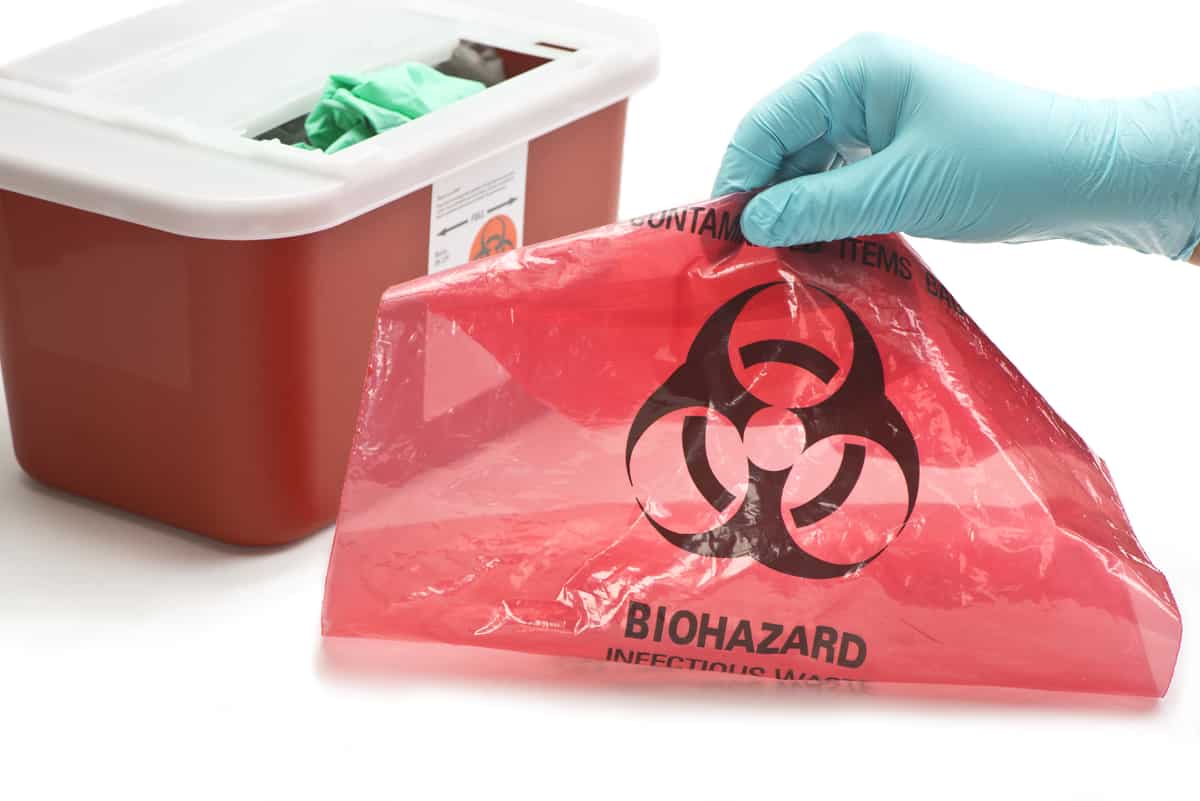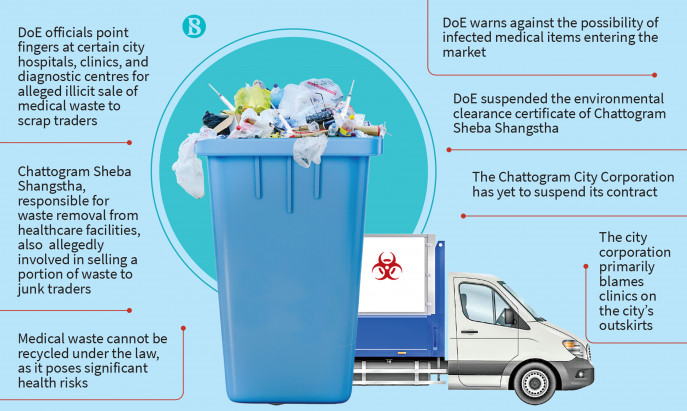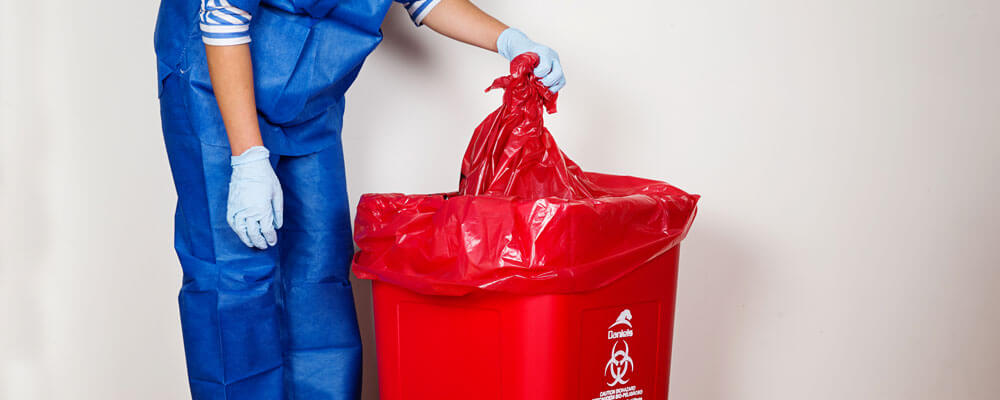Proactive Health Solutions: Choosing the very best Medical Waste Removal Near You
Remain Ahead of Regulations: Professional Suggestions on Medical Waste Disposal
In a world where the medical care market is frequently evolving, it is imperative for medical facilities to stay in advance of laws when it concerns the appropriate disposal of clinical waste. With rigorous guidelines and regular regulative adjustments, it can be testing to navigate the complexities of this process. With skilled advice, facilities can ensure compliance and mitigate risks linked with incorrect waste disposal. From recognizing the various groups of clinical waste to carrying out the best collection and partition techniques, this discussion will offer workable suggestions and important understandings to aid centers stay ahead of regulations in the ever-changing landscape of medical garbage disposal.
Understanding Clinical Waste Categories
Understanding clinical waste categories is essential for correct disposal and administration in medical care facilities. Clinical waste describes any type of waste generated by medical care activities that might pose a threat to public health and wellness or the environment. It is critical to categorize clinical waste accurately to guarantee its risk-free handling, disposal, transportation, and therapy.
There are a number of groups of medical waste that health care centers need to be accustomed to. The most typical groups include contagious waste, pathological waste, sharps waste, pharmaceutical waste, and chemical waste. Each category has details guidelines and guidelines for its correct management and disposal.
Contagious waste consists of materials polluted with blood or various other physical fluids, such as gloves, dress, and laboratory cultures. Pathological waste refers to human tissues, body organs, or body components that call for special delivery and disposal. Sharps waste consists of made use of needles, syringes, and other sharp objects that can trigger injury and transfer infections. Pharmaceutical waste consists of expired, unused, or contaminated medications that require cautious handling and disposal. Chemical waste consists of solvents, anti-bacterials, and various other chemical substances made use of in health care facilities.
Remaining Up-To-Date With Regulatory Modifications
Staying present with regulative adjustments is critical for medical care centers to make certain conformity and appropriate monitoring of clinical waste disposal. medical waste removal services. With guidelines regularly developing, it is necessary for health care facilities to stay current to prevent charges, fines, and potential injury to the setting and public health and wellness
To stay in advance of regulative modifications, healthcare centers must establish a system for tracking and tracking updates. This can be done by subscribing to governing newsletters, attending workshops and seminars, and proactively taking part in sector associations. In addition, centers should mark a team participant or group in charge of remaining notified and disseminating details to appropriate stakeholders.
Regular interaction with regulatory firms is also vital. Healthcare centers should develop relationships with neighborhood, state, and federal agencies to guarantee they understand any kind of modifications in laws that might impact their waste monitoring practices. This can be done with regular meetings, involvement in public comment periods, and aggressive engagement with regulative firms.
In addition, health care facilities need to think about partnering with waste management business that specialize in clinical waste disposal (medical waste disposal services with WasteX). These business are usually fluent in the most recent laws and can provide assistance and support to make certain compliance
Carrying Out Correct Collection and Partition Methods
To successfully manage medical waste disposal, health care centers have to develop correct collection and segregation methods in accordance with regulative guidelines. Carrying out these methods ensures the risk-free handling and disposal of potentially harmful products, secures the environment, and reduces the danger of injuries and infections to medical care employees and the public.
Appropriate collection and segregation techniques include the usage of assigned containers and identifying systems. Medical care centers ought to give plainly classified containers for various kinds of clinical waste, such as sharps, transmittable waste, pharmaceutical waste, and non-hazardous waste. These containers need to be color-coded and plainly marked to prevent confusion and advertise very easy recognition.
Furthermore, health care facilities should educate their personnel on the appropriate procedures for collecting and setting apart clinical waste. This includes enlightening them on the various types of waste, the appropriate containers to make use of, and the relevance of adhering to laws and standards. Regular training sessions and correspondence course ought to be conducted to guarantee that employee continue to be updated on best techniques.
Moreover, medical care facilities need to establish a system for normal collection and disposal of clinical waste. This might involve partnering with licensed waste monitoring companies that concentrate on medical waste disposal. These companies will certainly make sure that the collected waste is transported and disposed of in compliance with governing needs.
Choosing the Right Disposal Approaches

Incineration is one of the most typical and efficient methods for throwing away certain sorts of medical waste, such as pathological waste and sharps. It includes the regulated burning of waste at heats, minimizing it to ash. However, incineration can release dangerous toxins right into the air and add to air contamination.

Various other disposal techniques include chemical therapy, microwave therapy, and landfilling. Chemical treatment involves the usage of chemicals to sanitize and neutralize the waste. Microwave treatment makes use of microwave energy to warmth and sanitize the waste. Landfilling involves hiding the waste in a marked land fill area (medical waste disposal services with WasteX). Landfilling ought to be the last hotel due to the possible risk of contamination to soil and groundwater.
Making Sure Conformity Via Documents and Training
After carefully thinking about the proper disposal approaches for clinical waste, healthcare facilities must guarantee compliance with guidelines and lessen ecological influence by applying effective like this documentation and training procedures. This action is essential in preserving a safe and sustainable environment for both medical care employees and the general public.

Training is just as essential in making certain conformity with policies. Medical care workers that take care of medical waste must receive suitable training on waste partition, dealing with, and disposal treatments. This training should cover topics such as the correct use personal protective tools, identification of different kinds of waste, and the proper disposal methods for every waste classification. By giving extensive training, medical care centers can empower their staff to make educated choices and decrease the risk of incorrect garbage disposal.
Final Thought
Finally, staying ahead of guidelines in medical waste disposal is vital for health care centers. medical waste removal near me. Understanding the different categories of clinical waste, remaining upgraded with regulative modifications, executing appropriate collection and partition techniques, selecting the suitable disposal methods, and ensuring conformity with documentation and training are all vital steps. By adhering to these standards, health care organizations can properly dispose and manage of clinical waste in a risk-free and responsible manner
From understanding the various classifications of More Info medical waste to applying the appropriate collection and segregation techniques, this conversation will certainly supply actionable pointers and important insights to assist facilities remain ahead of guidelines in the ever-changing landscape of medical waste disposal. - medical waste disposal services with WasteX
The most typical categories consist of transmittable waste, pathological waste, sharps waste, pharmaceutical waste, and chemical waste. Healthcare facilities must give clearly identified containers for various types of medical waste, such as sharps, contagious waste, pharmaceutical waste, and non-hazardous waste. Health care centers Discover More need to establish an extensive system to tape and track all facets of clinical waste disposal, including types of waste generated, quantities, and disposal techniques utilized. Health care employees that deal with medical waste must obtain ideal training on waste segregation, dealing with, and disposal treatments.